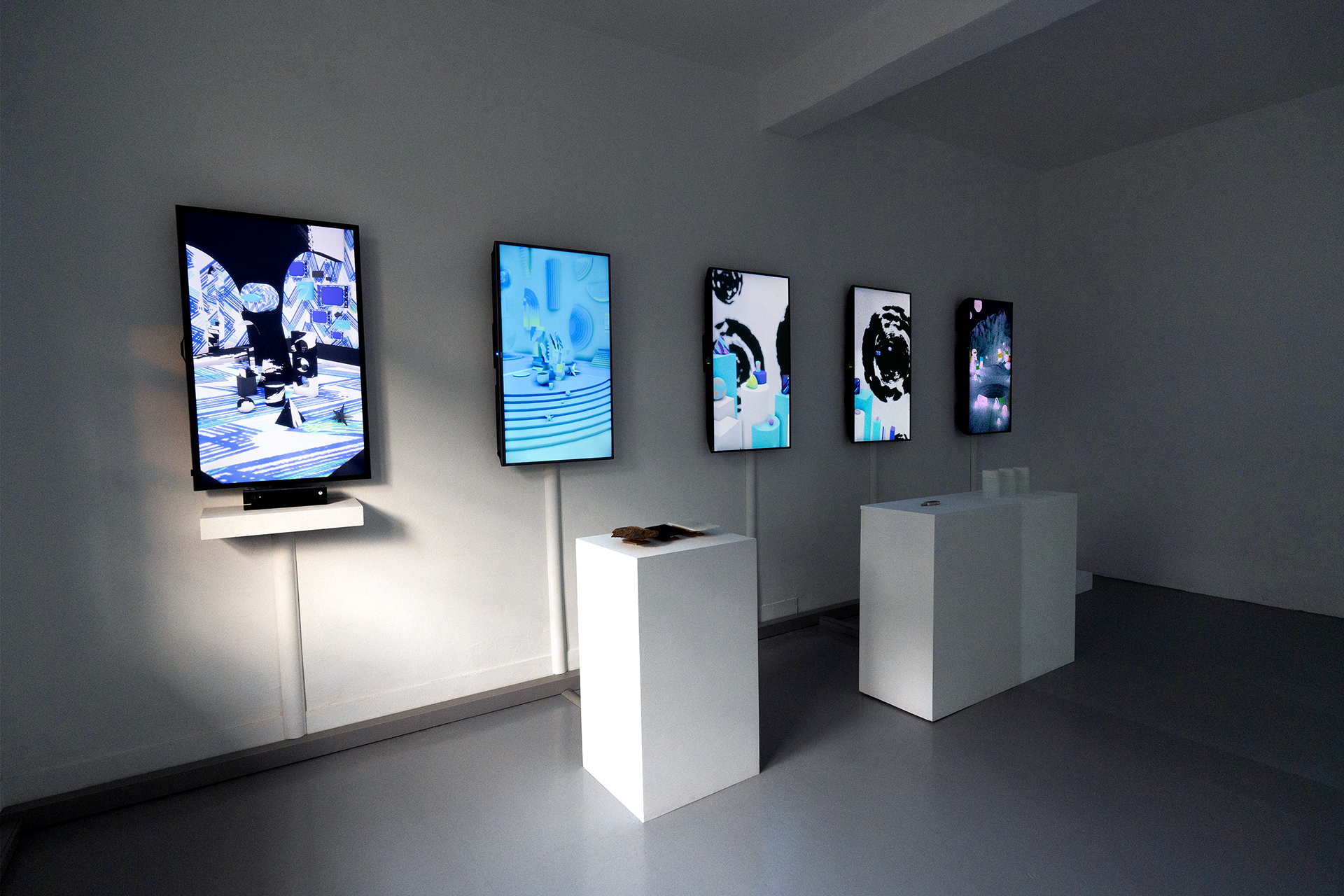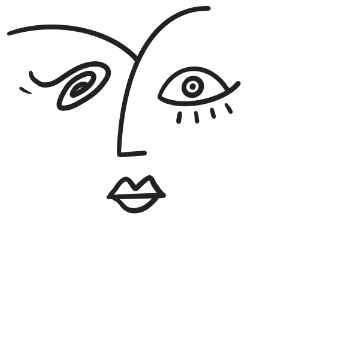Exploring the Boundaries of Human Perception
Kaleidosense is an interactive installation that reimagines the human senses as gateways to new possibilities—both in art and in the digital world. As society increasingly moves into digital landscapes, this project explores how technology intersects with our most primal ways of experiencing the world. Each of the five senses—sight, hearing, touch, smell, and taste—is represented through interactive elements, challenging audiences to reconsider how they engage with their environment and technology.
By pushing the boundaries of interactivity, Kaleidosense aims to provoke questions about the sustainability of our technological trajectory and how our senses can evolve to keep pace. It’s a playful yet thought-provoking exploration of what happens when art, technology, and human perception collide.
Concept and Vision
Our senses are the first tools we use to navigate the world, but in today’s digital age, much of our interaction is limited to sight and hearing. Kaleidosense seeks to reactivate all five senses within an artistic context, blending traditional human interaction with cutting-edge technology.
This installation poses essential questions: Can we innovate beyond the limits of our senses without losing touch with what makes us human? How can interactive art expand the way we experience the world?
The project challenges the notion of passive spectatorship, inviting viewers to engage physically, emotionally, and intellectually. It’s a sensory dialogue between the digital and physical, exploring how our bodies might adapt—or struggle—to keep up with rapidly advancing technologies.
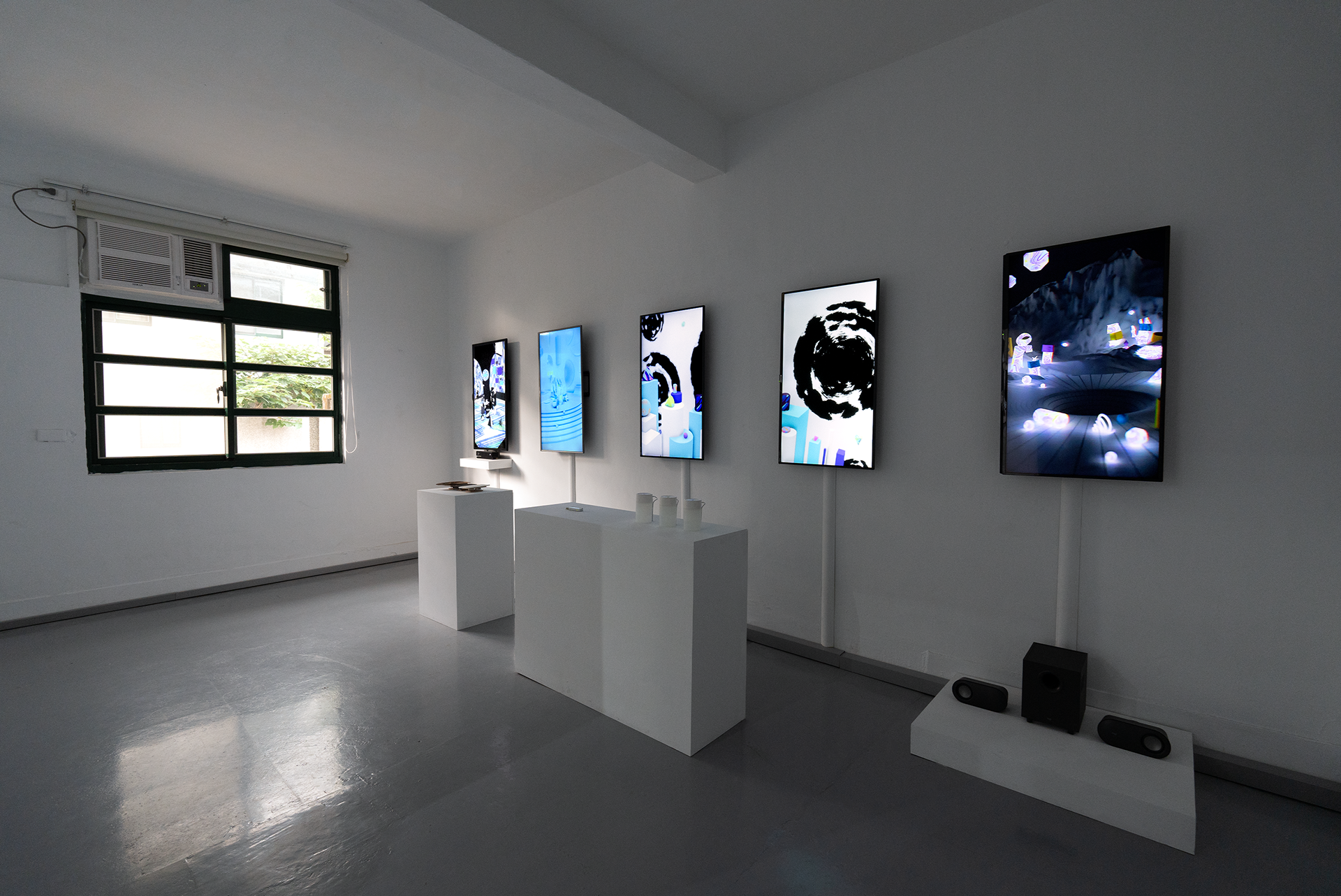
(from left to right) sight, touch, taste, smell, hearing
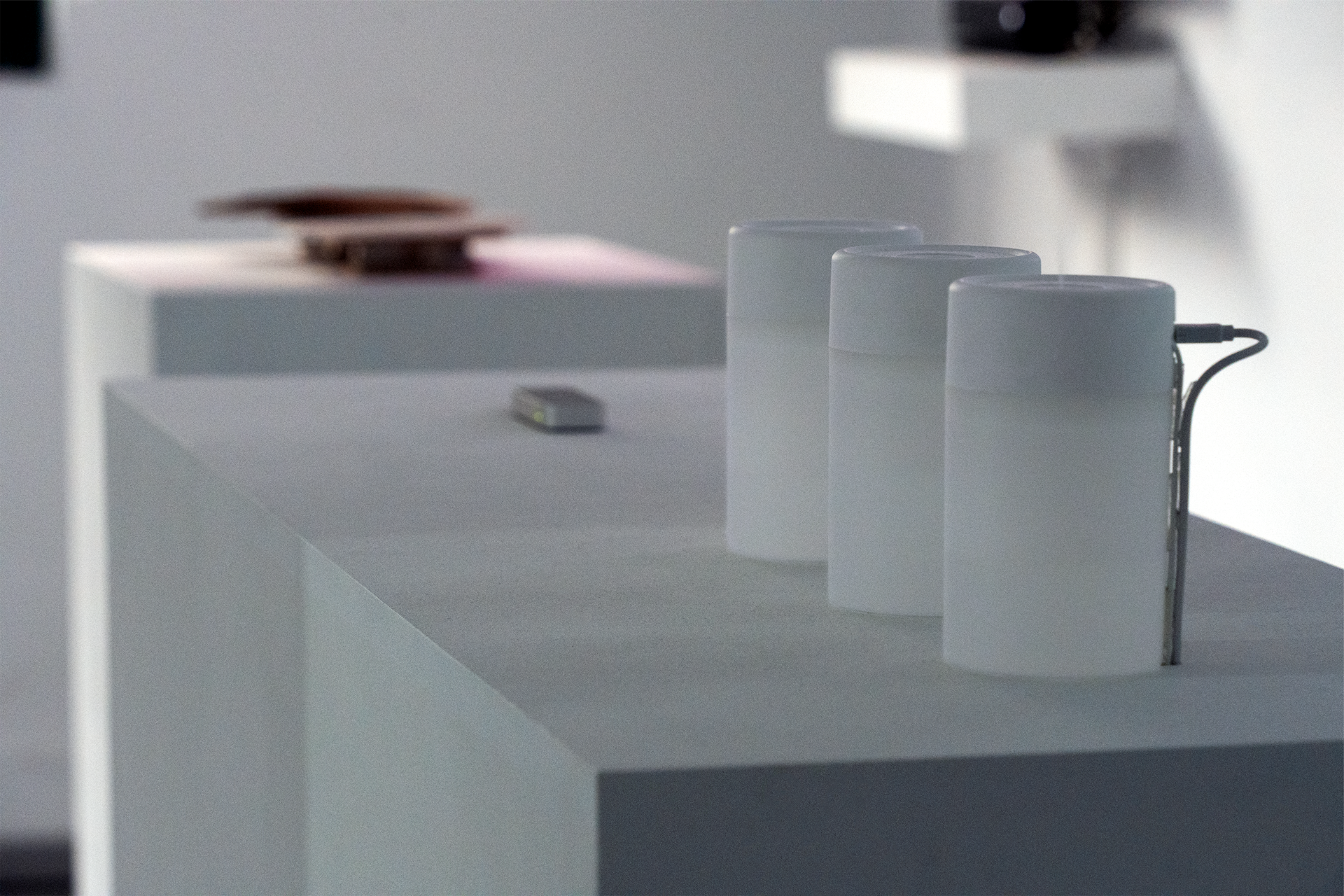
Diffusers that release aroma when triggered
Exploration of the Senses
Sight: Viewers interact with sight using an Xbox Kinect positioned beneath the TV screen. By waving their hands, they move an "eye" object on the screen, which changes the scene’s color. This color shift also affects the visual palettes of the other senses, symbolizing sight’s centrality to human perception. The scene incorporates elements like light, shadow, reflective surfaces, stairs, and TV screens to emphasize the act of seeing. Designing the 3D environment for sight required careful thought due to its broad scope, balancing the representation of light, danger, and reflection to create a meaningful experience.
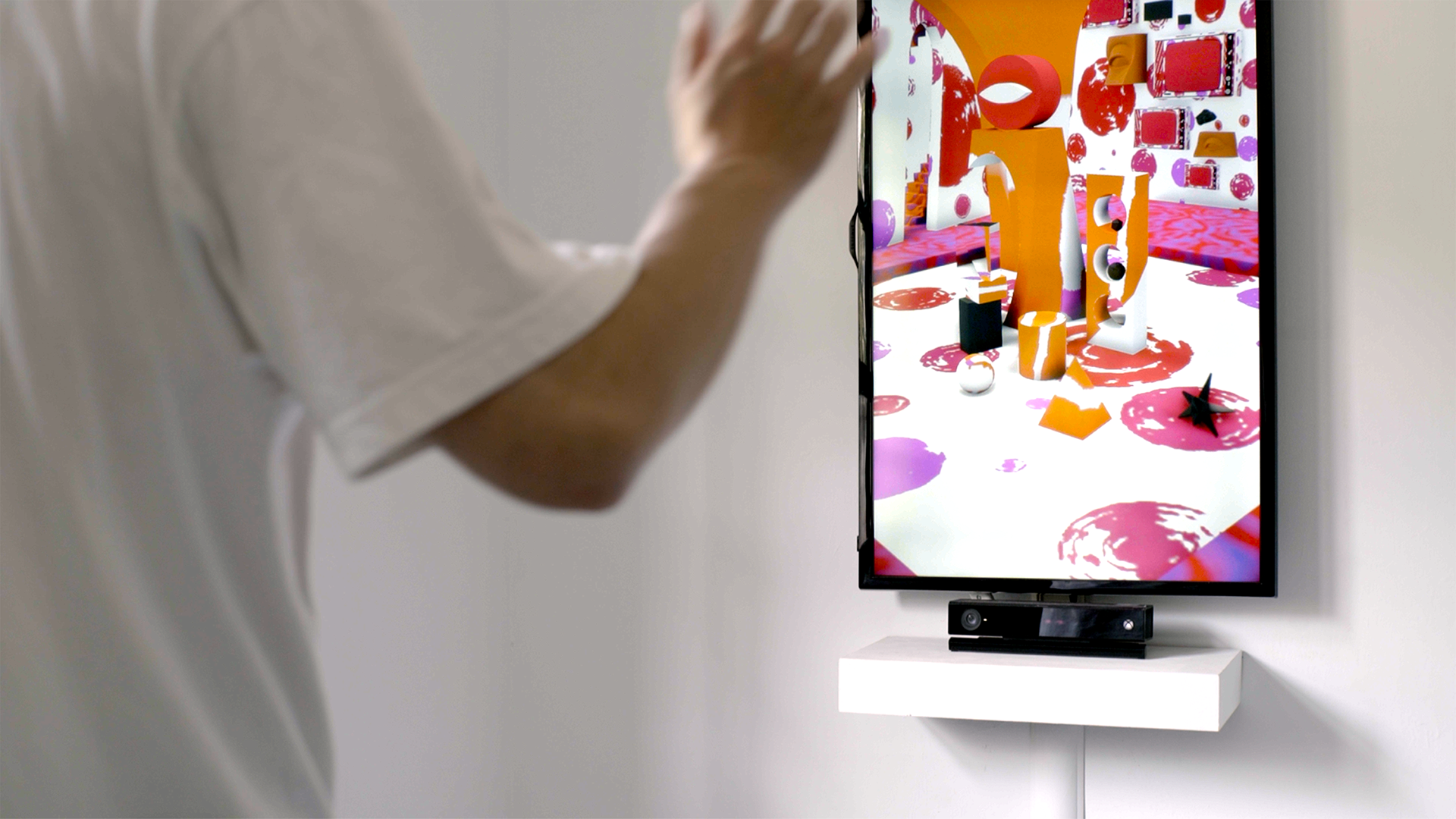
Audience interaction with the sight scene
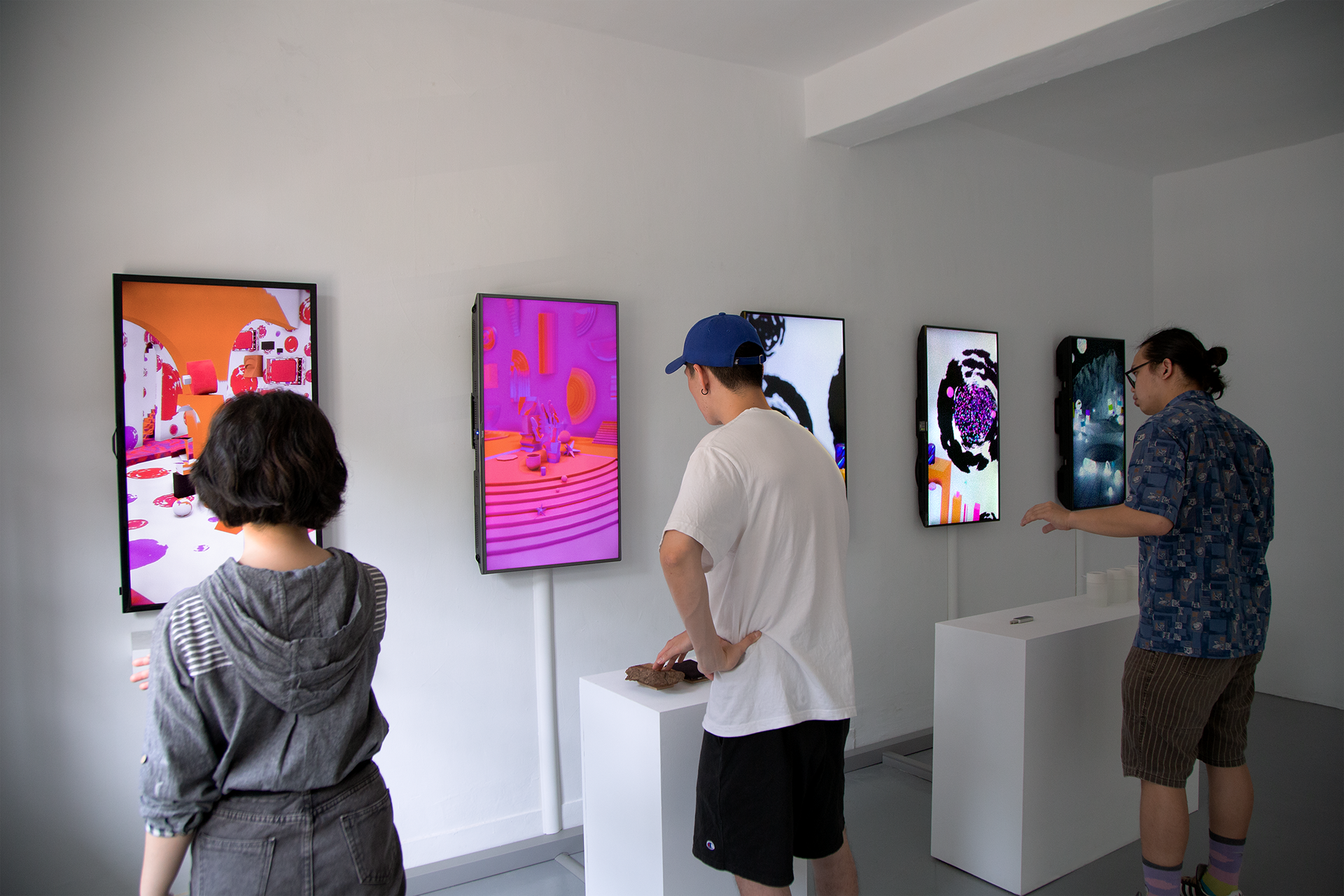
(left to right) sight, touch, taste, smell, and hearing
Touch is represented by materials placed on a white exhibition box in front of the TV screen. Viewers interact by feeling the materials—cloth, wood, and plastic—which trigger changes in the textures displayed in the scene. These materials symbolize natural, hand-made, and synthetic elements, highlighting the physical and diverse nature of touch. The 3D scene includes round and sharp textures and a visual hand motif, underscoring touch’s tactile essence. Translating this physicality into a visual medium presented challenges, particularly in maintaining a large and open scene that conveyed the depth of this sense without overwhelming viewers.
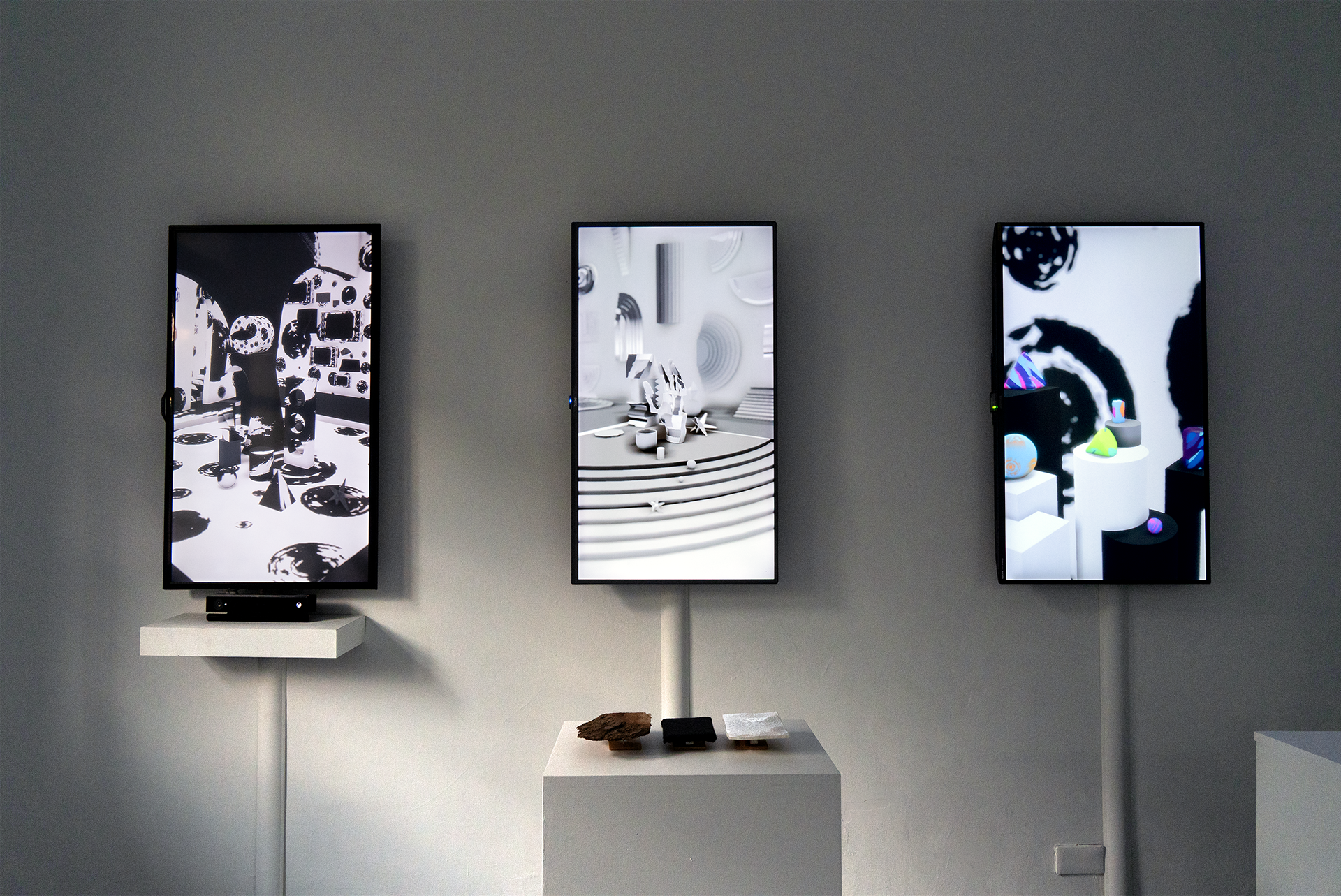
(left to right) sight, touch, taste
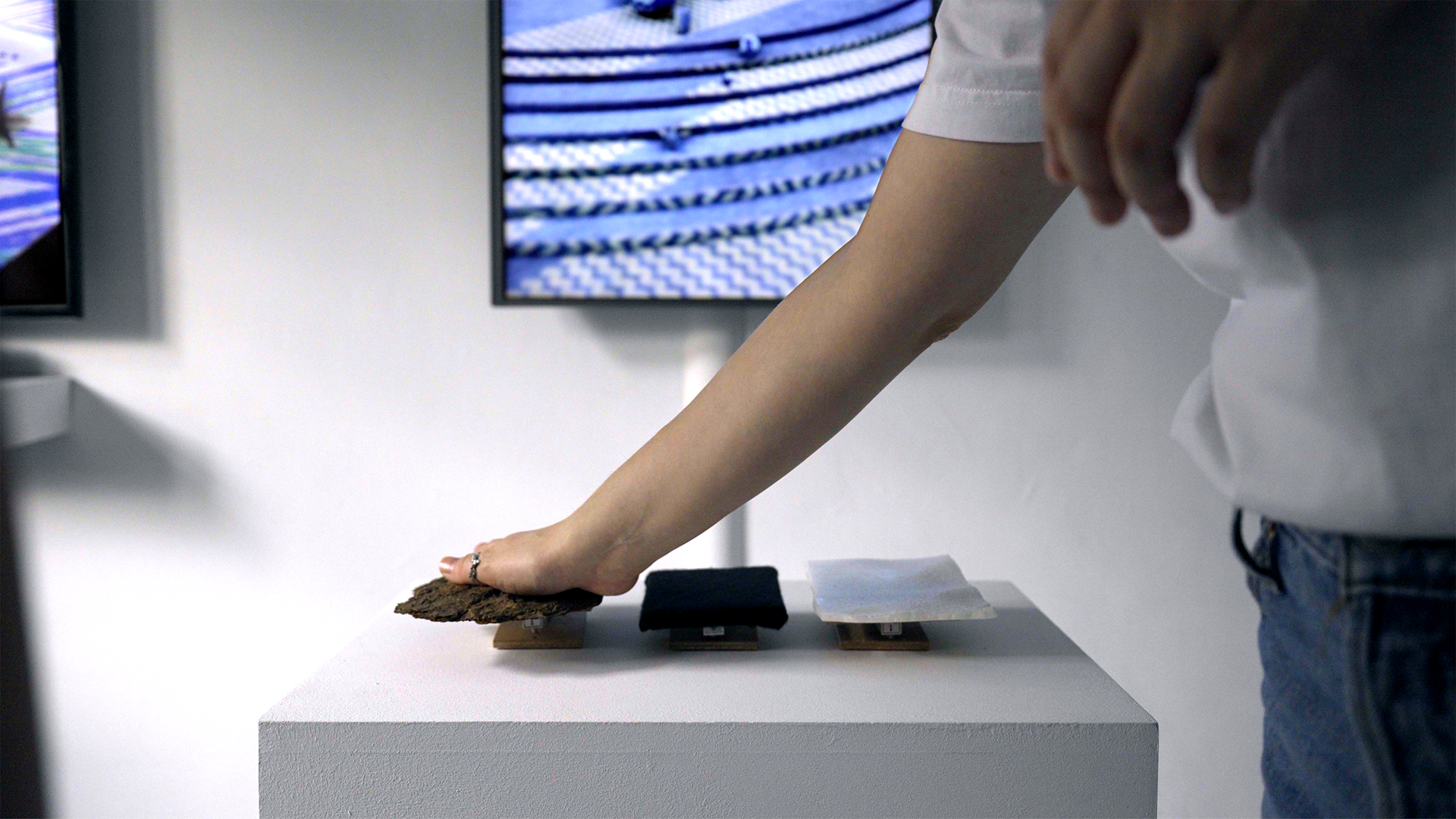
Audience interaction with touch materials
Smell and taste (The Chemical Senses) are closely linked, represented by two separate TV screens whose 3D scenes are interconnected. Smell is symbolized by floating shapes that dissolve into particles when interacted with, while taste is represented by static shapes on platforms that melt into liquid, referencing salivation. Viewers use a Leap Motion Controller to pinch these objects, triggering aromas from diffusers placed on the exhibition box. Shapes floating in the background can also spontaneously burst into particles, mimicking how smells can unexpectedly drift by in real life. Designing the interactions for these senses was technically complex, especially in creating realistic physics-based reactions within the 3D environment.
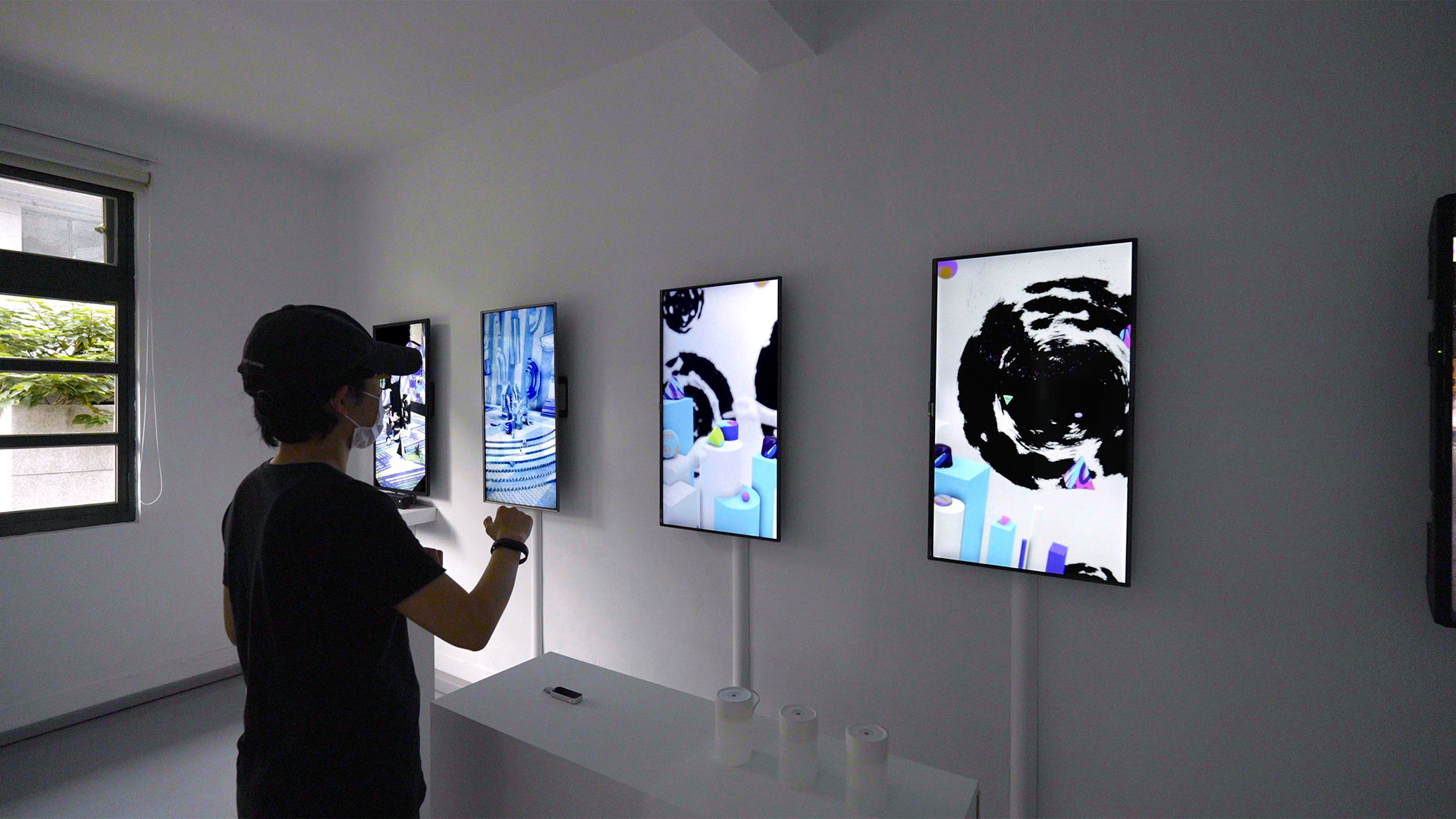
Audience interaction with taste (left) and smell (right) screens to trigger diffusion from the diffusers
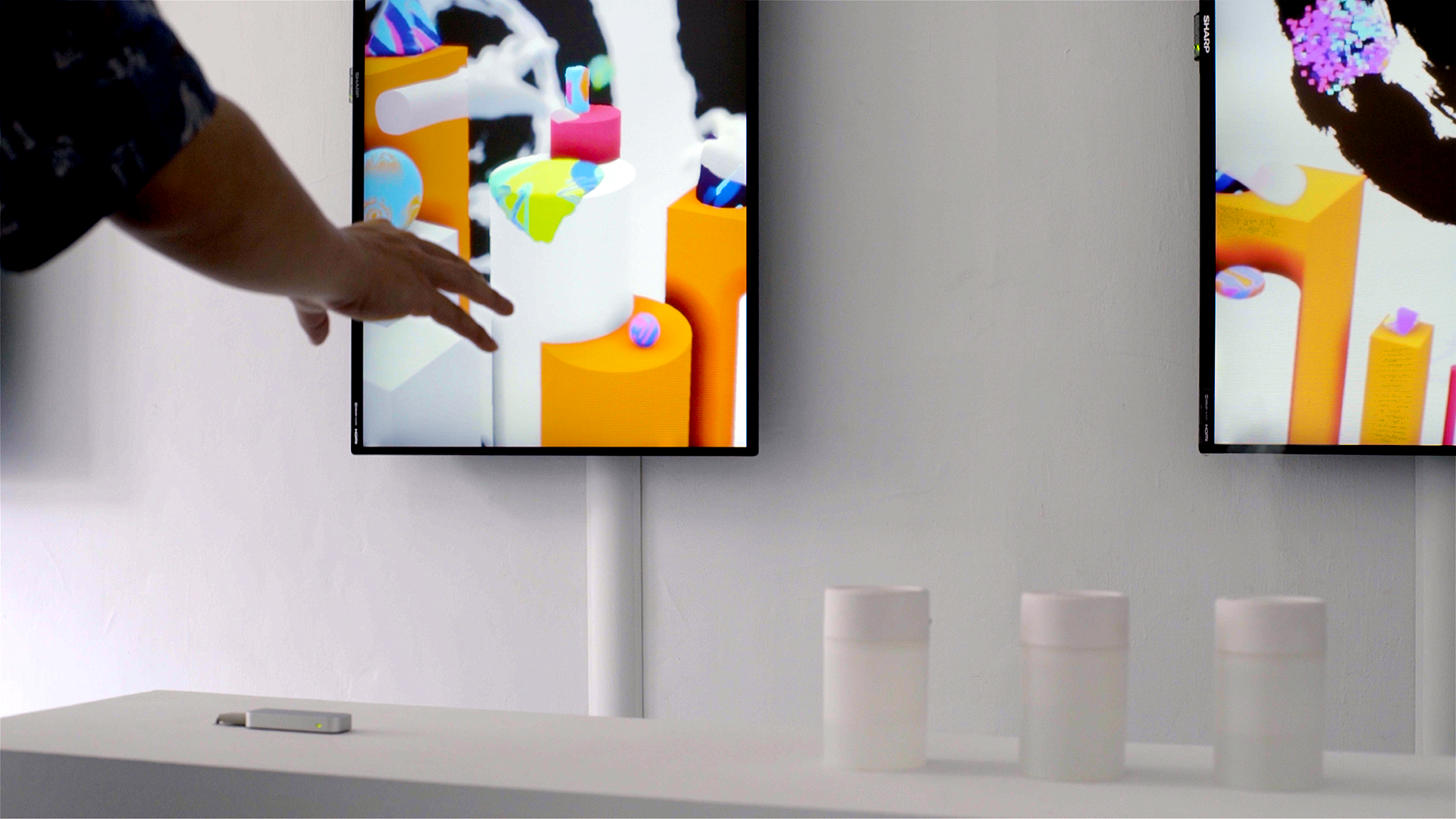
Audience interaction with Leap Motion controller for smell and taste
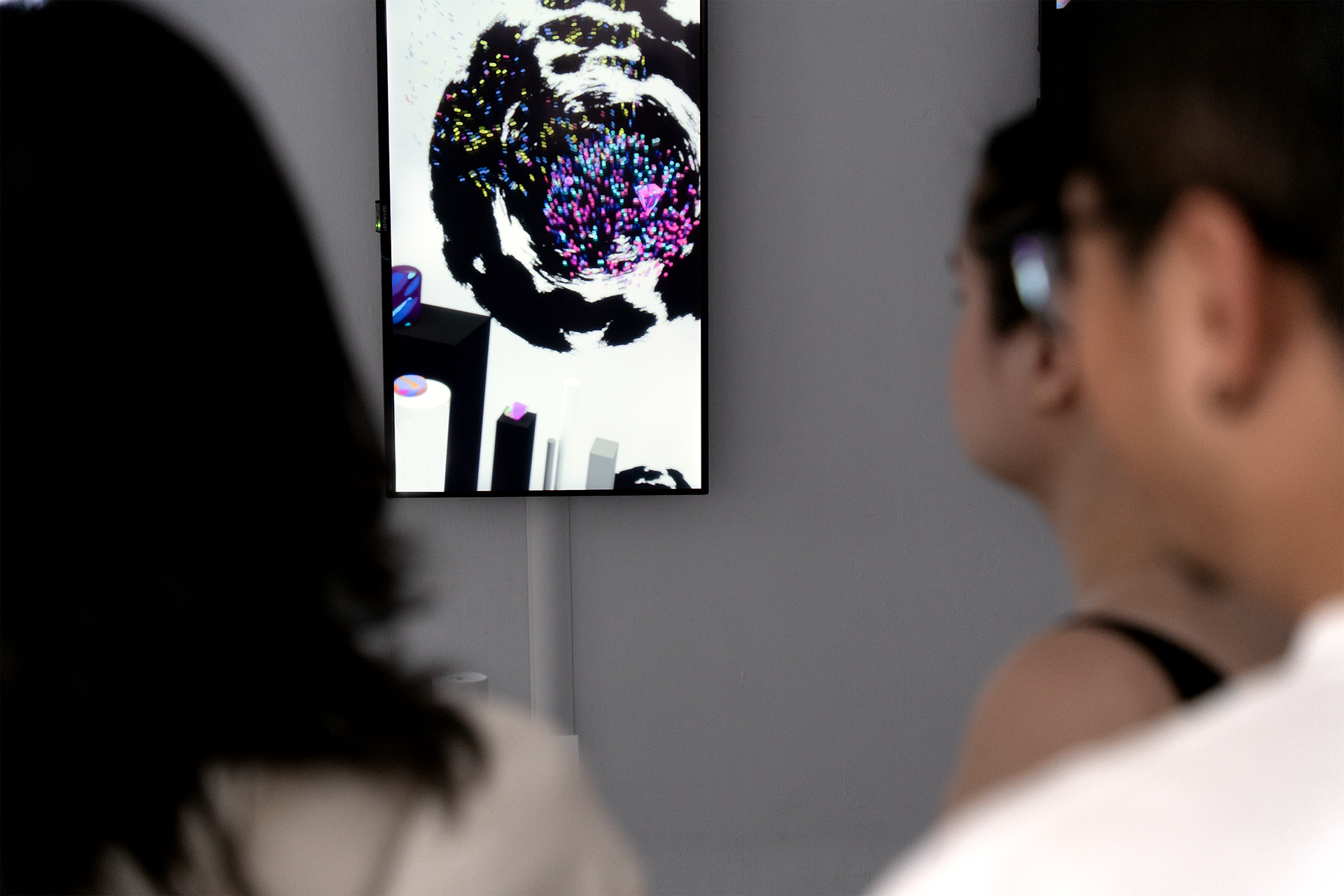
Smell objects dissipating into particles
Hearing interacts indirectly with the other senses, as sounds are triggered when viewers engage with sight, touch, smell, or taste. The 3D scene displayed on the hearing TV screen features a gramophone-inspired shape and subtle forms, with dark tones suggesting how sound allows us to visualize objects in the absence of light. Due to time constraints, hearing’s interactivity was limited, but it remains integral to the installation’s sensory dialogue, emphasizing how sound often precedes other senses in our perception of the world.

Hearing _ looping video
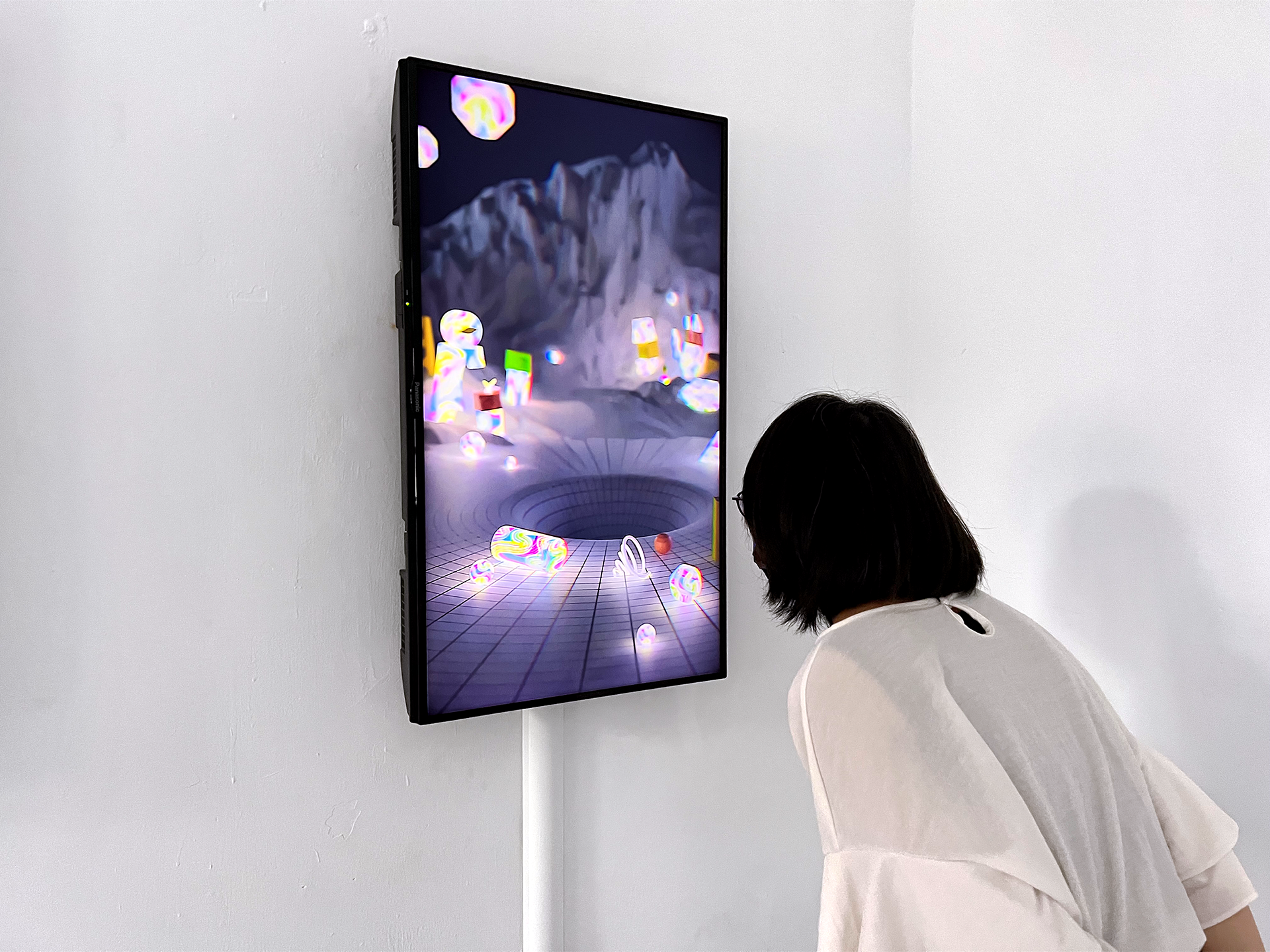
Sound is output via speakers below the screen for hearing
Interactive Design + Technology
Kaleidosense leverages cutting-edge technology to create a seamless multi-sensory experience. Each sense is represented by a dedicated TV screen paired with interactive devices, including an Xbox Kinect, Leap Motion Controller, Arduino microcontrollers, and aroma diffusers. Materials like wood, plastic, and cloth provide tactile interaction, while custom 3D scenes were designed in Blender and Unity to visually represent each sense.
The integration of these elements was carefully executed to maintain a clean and immersive presentation. All interactive devices and cables are concealed within sleek white exhibition boxes, creating a professional aesthetic that prioritizes the viewer’s experience. Despite the technical challenges of developing this project within a one-month timeframe, the result successfully bridges artistic vision with innovative technology, highlighting how human perception can adapt to and engage with the digital world.
Audience Interaction + Engagement
The installation encourages playful exploration, allowing up to three or four participants to interact with the senses simultaneously. Visitors can wave their hands to activate sight, touch different textures to explore touch, or pinch objects in the digital scenes to trigger smell and taste. Hearing responds indirectly, with sounds emitted as feedback from other interactions, creating a layered sensory experience.
Audience reactions varied; children engaged with ease, treating the installation like a game, while older participants initially faced a learning curve but were equally intrigued by the concept. This range of responses underscores the accessibility and interactive nature of the work, inviting viewers to reflect on how they use their senses and adapt to new modes of engagement.
Artistic Intent + Broader Implications
At its core, Kaleidosense challenges the boundaries of how art is experienced. By incorporating all five senses, the project reimagines the possibilities for interactive art, emphasizing the role of human perception in understanding and engaging with technology. It poses critical questions about the pace of innovation: Are we evolving fast enough to keep up with the digital advancements that shape our world? Can our senses remain relevant as technology redefines how we interact with the environment?
The installation also highlights the necessity of experimenting with sensory integration in art, pushing beyond traditional modes of viewing and listening to foster deeper connections between humanity and the digital realm. By doing so, Kaleidosense aims to pave the way for a future where interactive art plays a key role in bridging the gap between innovation and human experience.
Creative Process + Future Development
The journey of creating Kaleidosense was marked by challenges and breakthroughs. Originally envisioned as an animation, the project pivoted to an interactive installation just one month before its exhibition. While compromises were made—such as hearing’s limited interactivity—this decision significantly expanded the project’s impact, transforming it into an immersive exploration of human perception.
Looking ahead, I envision expanding Kaleidosense into a fully immersive environment, with projections and responsive elements that allow visitors to engage with all five senses on a larger scale. Future iterations could see the senses influencing each other dynamically, emphasizing their interconnectedness and creating a richer sensory dialogue. This evolution would further explore the intersection of art, technology, and human adaptability, offering new possibilities for how we experience and interpret the world around us.
